NIL
Federal Judge Approves $2.8 Billion NCAA Settlement, Paving Way for US Colleges to Pay Athletes — The Santa Clara
SANTA CLARA, Calif. (AP) – On Friday, a federal judge signed off on arguably the biggest change in the history of college sports, clearing the way for schools to begin paying their athletes millions as soon as next month as the multibillion-dollar industry shreds the last vestiges of the amateur model that defined it for […]
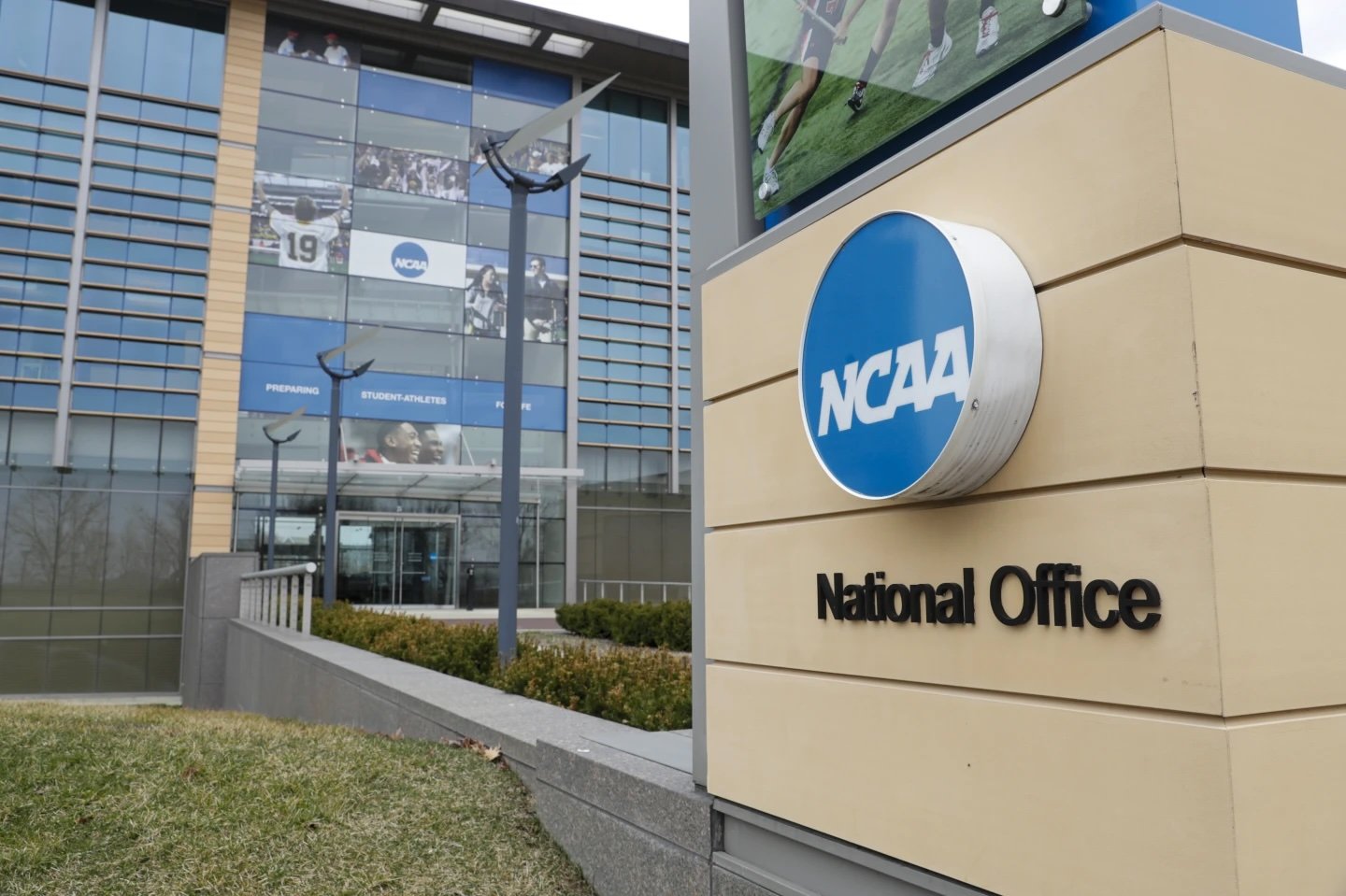
SANTA CLARA, Calif. (AP) – On Friday, a federal judge signed off on arguably the biggest change in the history of college sports, clearing the way for schools to begin paying their athletes millions as soon as next month as the multibillion-dollar industry shreds the last vestiges of the amateur model that defined it for more than a century.
Nearly five years after Arizona State University swimmer Grant House sued the NCAA and its five biggest conferences to lift restrictions on revenue sharing, U.S. Judge Claudia Wilken approved the final proposal that had been hung up on roster limits, just one of many changes ahead amid concerns that thousands of walk-on athletes will lose their chance to play college sports.
The sweeping terms of the so-called House settlement include approval for each school to share up to $20.5 million with athletes over the next year and $2.8 billion that will be paid over the next decade to thousands of former players who were barred from that revenue for years.
One of the lead plaintiff attorneys, Steve Berman, called Friday’s news “a fantastic win for hundreds of thousands of college athletes.”
The agreement brings a seismic shift to hundreds of schools that were forced to reckon with the reality that their players are the ones producing the billions in TV and other revenue, mostly through football and basketball, that keep this machine humming.
The scope of the changes—some have already begun—is difficult to overstate. The professionalization of college athletics will be seen in the high-stakes and expensive recruitment of stars on their way to the NFL and NBA, and they will be felt by athletes whose schools have decided to pare their programs. The agreement will resonate in nearly every one of the NCAA’s 1,100 member schools boasting nearly 500,000 athletes.
NCAA President Charlie Baker said the deal “opens a pathway to begin stabilizing college sports.”
The road to a settlement
Wilken’s ruling comes 11 years after she dealt the first significant blow to the NCAA ideal of amateurism. Then, she ruled in favor of former UCLA basketball player Ed O’Bannon and others seeking a way to earn money from the use of their “name, image and likeness” —a term that is now as common in college sports as “March Madness” or “Roll Tide.”
It was just four years ago that the NCAA cleared the way for NIL money to start flowing, but the changes coming are even bigger.
Wilken granted preliminary approval to the settlement last October. That sent colleges scurrying to determine not only how they were going to afford the payments, but how to regulate an industry that also allows players to cut deals with third parties so long as they are deemed compliant by a newly formed enforcement group that will be run by auditors at Deloitte.
The agreement takes a big chunk of oversight away from the NCAA and puts it in the hands of the four biggest conferences. The ACC, Big Ten, Big 12 and SEC hold most of the power and decision-making heft, especially when it comes to the College Football Playoff, which is the most significant financial driver in the industry and is not under the NCAA umbrella like the March Madness tournaments are.
Roster limits held things up
The deal looked ready to go, but Wilken put a halt to it this spring after listening to a number of players who had lost their spots because of newly imposed roster limits being placed on teams.
The limits were part of a trade-off that allowed the schools to offer scholarships to everyone on the roster, instead of only a fraction, as has been the case for decades. Schools started cutting walk-ons in anticipation of the deal being approved.
Wilken asked for a solution and, after weeks, the parties decided to let anyone cut from a roster—now termed a “Designated Student-Athlete”—return to their old school or play for a new one without counting against the new limit.
Wilken ultimately agreed, going point-by-point through the objectors’ arguments to explain why they didn’t hold up. The main point pushed by the parties was that those roster spots were never guaranteed in the first place.
“The modifications provide Designated Student-Athletes with what they had prior to the roster limits provisions being implemented, which was the opportunity to be on a roster at the discretion of a Division I school,” Wilken wrote.
Her decision, however, took nearly a month to write, leaving the schools and conferences in limbo—unsure if the plans they’d been making for months, really years, would go into play.
Winners and losers
The list of winners and losers is long and, in some cases, hard to tease out.
A rough guide of winners would include football and basketball stars at the biggest schools, which will devote much of their bankroll to signing and retaining them. For instance, University of Michigan quarterback Bryce Underwood’s NIL deal is reportedly worth between $10.5 million and $12 million.
Losers, despite Wilken’s ruling, figure to be at least some of the walk-ons and partial scholarship athletes whose spots are gone.
Also in limbo are the Olympic sports many of those athletes play and that serve as the main pipeline for a U.S. team that has won the most medals at every Olympics since the downfall of the Soviet Union.
All this is a price worth paying, according to the attorneys who crafted the settlement and argue they delivered exactly what they were asked for: an attempt to put more money in the pockets of the players whose sweat and toil keep people watching from the start of football season through March Madness and the College World Series in June.
What the settlement does not solve is the threat of further litigation.
Though this deal brings some uniformity to the rules, states still have separate laws regarding how NIL can be doled out, which could lead to legal challenges. Baker has been consistent in pushing for federal legislation that would put college sports under one rulebook and, if he has his way, provide some form of antitrust protection to prevent the new model from being disrupted again.
NIL
Women’s Soccer to Play Three Nationally-Televised Games in 2025
RALEIGH, N.C. – ESPN has unveiled its broadcast schedule for the 2025 college women’s soccer season, with NC State set to appear three times on the nationally-televised ACC Network. Each of the Wolfpack’s ACCN matchups will come against opponents who reached the 2024 College Cup. NC State’s first national appearance will take place on Thursday, […]

NC State’s first national appearance will take place on Thursday, October 2 at 7 p.m., when the Pack hosts Wake Forest at Dail Soccer Field.
The Wolfpack will return to the network later in the month for two more contests, starting with another home match against Duke on Sunday, October 26 at 7 p.m. The regular season will conclude with a nationally-televised showdown on the road at North Carolina on Thursday, October 30 at 8 p.m.
All games airing on ESPN platforms will be available to stream via the ESPN app and ACC Network Extra (ACCNX). All home matches not selected for linear broadcast, as well as ACC road contests, will be streamed live on ACCNX.
For the most up-to-date schedule and streaming information, visit the women’s soccer schedule page on GoPack.com.
NIL
Coaches Poll: Preseason Top 25 released ahead of 2025 college football season
The preseason top 25 rankings, via the Coaches Poll, are here ahead of the 2025 college football season. So, it’s time to pop the champagne! The rankings will certainly change week to week and by the end of the season of course. But this is a solid indication of where we will begin in a […]
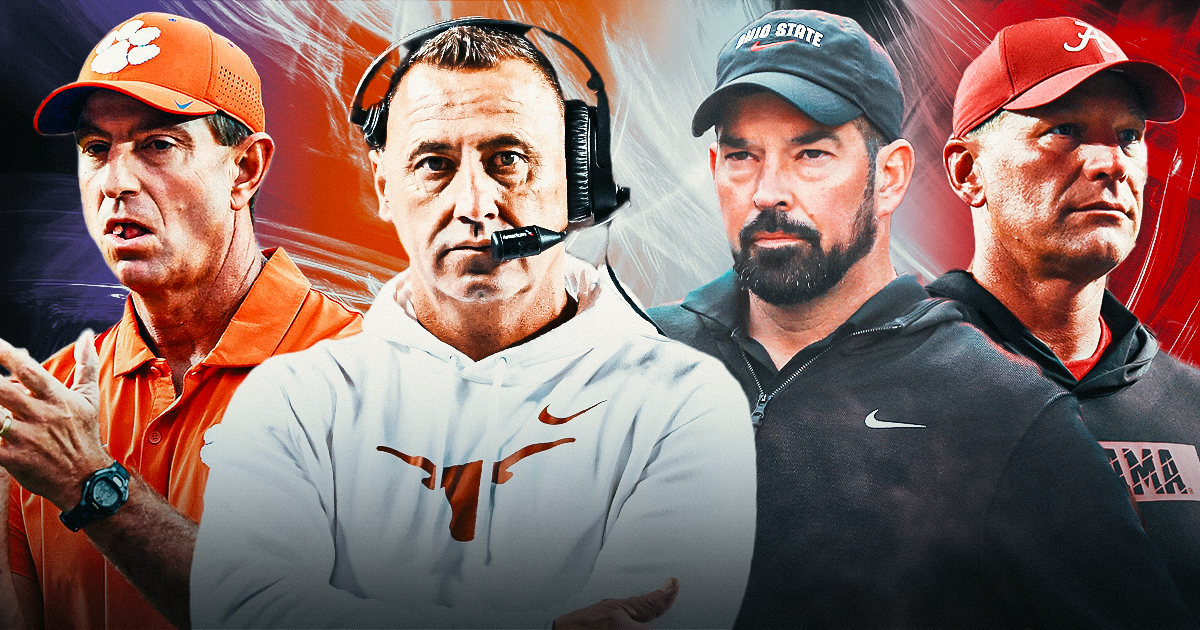
The preseason top 25 rankings, via the Coaches Poll, are here ahead of the 2025 college football season. So, it’s time to pop the champagne!
The rankings will certainly change week to week and by the end of the season of course. But this is a solid indication of where we will begin in a few weeks.
Without further ado, let’s dive into the top 25 rankings from the preseason Coaches Poll. We start at the top!
Texas comes back with national championship expectations following two straight years making the semifinal. Arch Manning takes over at quarterback with the weight of the world on his shoulders, practically.
Steve Sarkisian has weapons all over the field and it’s arguably his best team during his Texas tenure. Buckle up Austin, this could be a historic year.
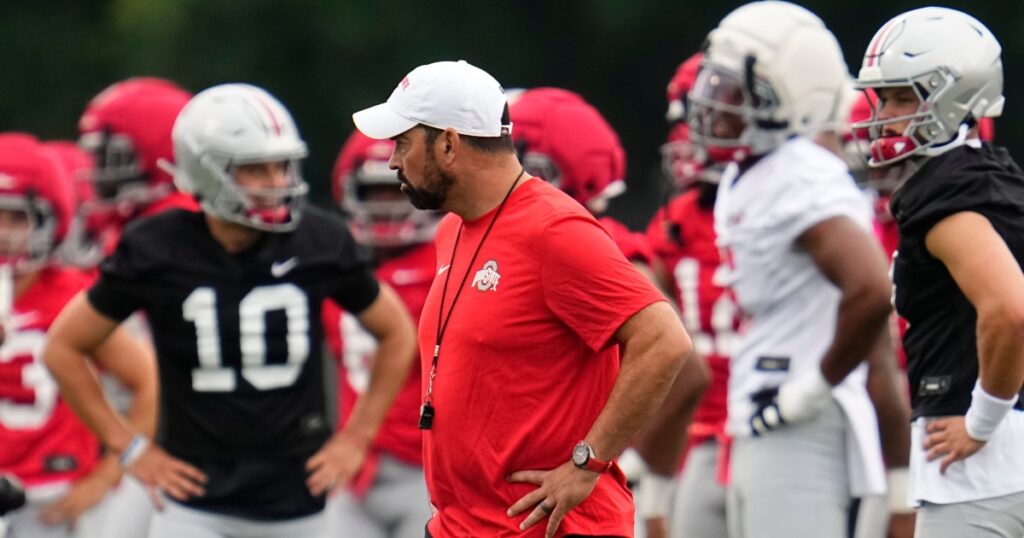
Can Ohio State win back to back national titles? They’re ranked in the preseason polls with a narrative that yes, they could do so.
Ryan Day can coach freely now that he has that elusive first title. Stars like WR Jeremiah Smith and DB Caleb Downs lead this group. TBD on new quarterback Julian Sayin or Lincoln Keinholz to continue the trend of high level play under center.
Penn State is running it back, similar to what Big Ten foe Ohio State did last season. Drew Allar leads the charge at QB and is aided by RBs Nick Singleton and Kaytron Allen.
On defense, Dani Dennis-Sutton headlines an elite defensive unit, as they’ll collectively replace Abdul Carter. The Nittany Lions are on the short list of national title contenders.
Georgia might not be as talked about compared to recent years. Coming off an SEC title and No. 2 seed in the CFP, the Bulldogs should be back in the thick of the title race.
New QB Gunner Stockton has a large task ahead of him: continue a high level of play. WR Zachariah Branch, who transferred in from USC, should help. Army LB transfer Elo Modozie should be a factor.
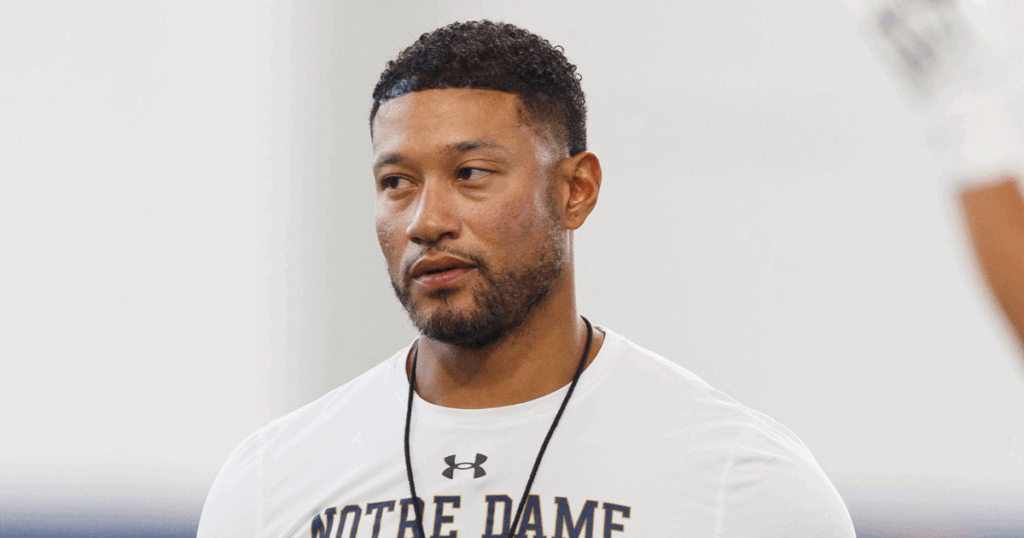
Marcus Freeman nearly went on one of the best runs we’ve seen last year, but the Irish fell short in the national championship. But, Notre Dame brings a lot of talent back to compete for another CFP run.
CJ Carr or Kenny Minchey will come out on top in the QB race, but the offense likely runs through Heisman contender Jeremiyah Love at RB. Defensive back DeVonta Smith transferred in from Alabama and should be key in the secondary.
Dabo Swinney and Clemson returned to a large national spotlight last season with their most successful year in a few seasons. Winning the ACC and returning to the CFP was just the first step.
As far as how the Coaches Poll sees them, this will be a very competitive team that could climb its way to national title contender. QB Cade Klubnik is the de facto leader, but there are first round picks, potentially, on defense with Peter Woods and TJ Parker on the defensive line.
Oregon has to replace a lot of production at QB and step it up at wide receiver with the potential season-ending injury to Evan Stewart. Dante Moore is expected to step up for QB Dillon Gabriel after sitting a year.
But if there’s one thing Dan Lanning can do, it’s coach up his squad. They’ve improved each season under his watch and perhaps they could win the Big Ten for a second straight year.
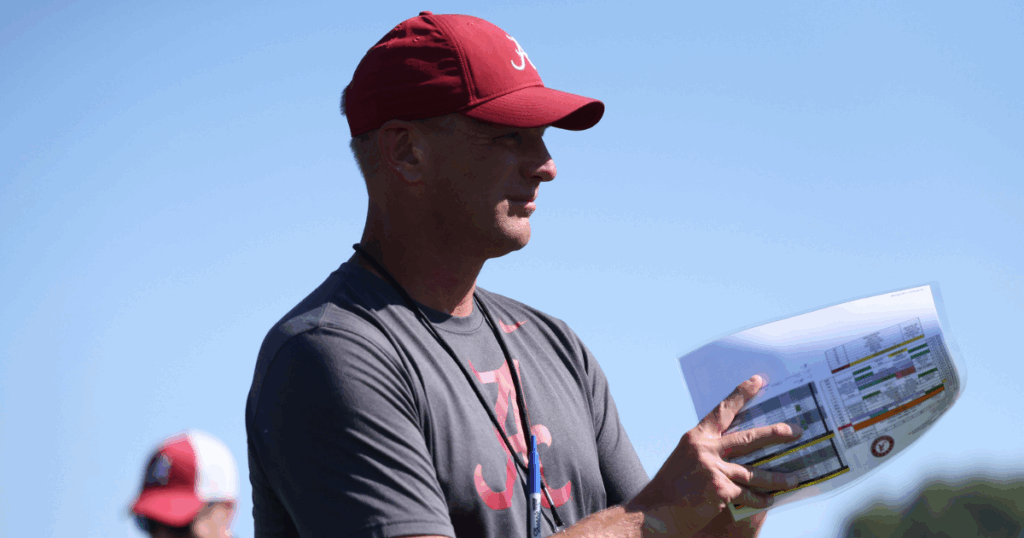
Year 1 for Kalen DeBoer and Alabama didn’t go as planned, not making the playoff and losing to Michigan in a bowl game. Still, DeBoer’s coaching prowess and development can’t be understated.
Ty Simpson is the expected QB and he has an all-star at WR in Ryan Williams to throw to. The defense is loaded with stars such as LT Overton. They’re back to SEC contender and have a chance to make a run in the CFP.
Can Brian Kelly finally get his team to the College Football Playoff? The LSU coach should have a great chance based on the preseason Coaches Poll.
QB Garrett Nussmeier is a Heisman contender going into the fall. Not only that, Harold Perkins captains the defense at linebacker and if he returns to form, that could be a scary unit for the Tigers.
Miami fell short last season with some missed opportunities to get to the ACC title game. To be fair, they had a little bit of Lady Luck on their side as well.
Carson Beck transferred in to replace Cam Ward at QB. That’ll be the biggest spotlight in Coral Gables this season. Mario Cristobal has a lot of talent at his disposal and the College Football Playoff should be the minimum.
Preseason Coaches Poll Top 25 rankings for 2025
11. Arizona State
12. Illinois
13. South Carolina
14. Michigan
15. Ole Miss
16. SMU
17. Florida
18. Tennessee
19. Indiana
20. Kansas State
T21. Texas A&M
T21. Iowa State
23. BYU
24. Texas Tech
25. Boise State
Others receiving votes in Coaches Poll: Oklahoma 221; Missouri 142; Louisville 126; USC 116; Utah 86; Baylor 76; Auburn 50; Iowa 49; Memphis 34; Army West Point 33; Tulane 31; Georgia Tech 27; TCU 24; Nebraska 19; Syracuse 16; Washington 15; Navy 14; Arkansas 14; Duke 12; Colorado 12; Minnesota 11; UNLV 8; Florida State 8; Kansas 6; Vanderbilt 3; Buffalo 1
NIL
The Clemson Insider
College athletics are in the midst of a whirlwind type of transformation, with the landscape constantly changing. From the advent of NIL and the transfer portal just a few short years ago, to the implementation of the House Settlement, which now allows schools to pay student athletes directly. Athletics Director Graham Neff has been one […]
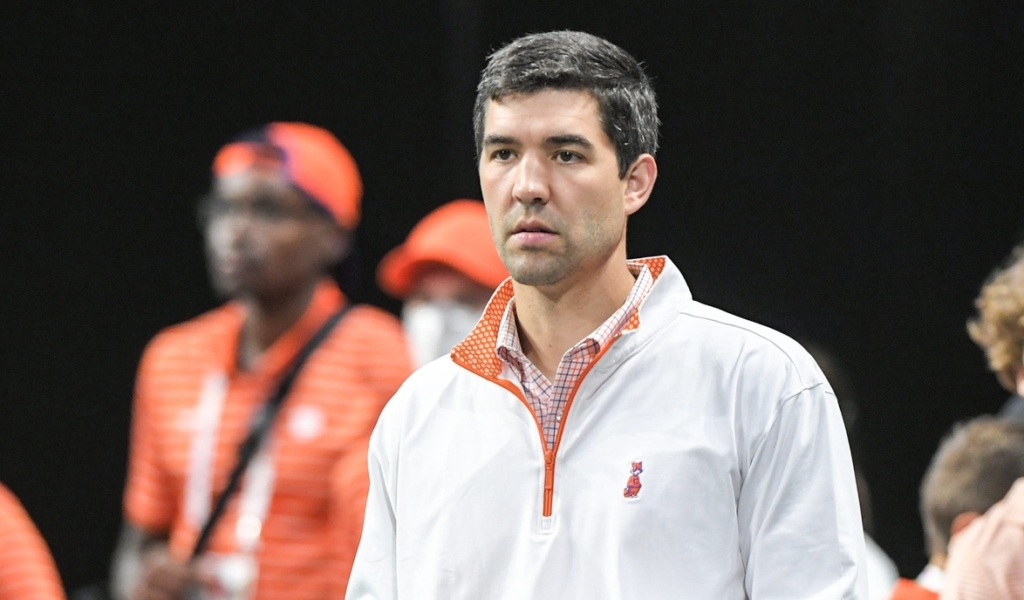
College athletics are in the midst of a whirlwind type of transformation, with the landscape constantly changing.
From the advent of NIL and the transfer portal just a few short years ago, to the implementation of the House Settlement, which now allows schools to pay student athletes directly.
Athletics Director Graham Neff has been one of the people responsible for leading Clemson into this brand new world, and deserves a lot of the credit for having the school well-positioned in this new era.
“The implementation of the House Settlement has certainly been a frontal focus, couldn’t be a higher priority,” Neff said on Tuesday from the Smart Family Media Center. “Certainly, what that looks like locally with the deployment of our revenue share dollars. We have talked about that, we are without question fully funding and all in on our revenue distribution strategy on how we allocate that among teams.”
Not only does the settlement allow Clemson to share up to $20.5 million directly with its student athletes this year, but it has also allowed for the creation of 150 new scholarships combined across all sports. For example, football will go from having 85 to 105. Basketball will go from 13 to 15, and baseball will get a huge bump, moving from the archaic 11.7 to 34 full scholarships.
“Football continues and will be our investment strategy from a business standpoint, but that allocation of additional scholarships, 150, is significant,” Neff added. “We previously had 275 scholarships, kind of collectively, but adding 150 to that is significant. From a per capita standpoint, that might be the most, or as big of an increase as any other school in the country.”
At the same time, there are still some unanswered questions regarding some of the things surrounding the settlement, particularly when it comes to NIL. Originally, all NIL deals valued at more than $600 were to be submitted to a clearinghouse called NIL Go for approval. If it were determined that the deal was not a valid endorsement deal, it would be rejected. The guidelines were aimed at slowing down the “pay for play” deals that some of the collectives at other schools were putting together.
However, in recent weeks, the College Sports Commission, which oversees the new NIL guidelines, has changed its stance on collectives and will now allow them to be treated like any other third-party business.
As with any new change, especially one of this magnitude, there are bound to be some bumps in the road, and Neff is doing whatever he can to ensure Clemson is prepared for any and all possibilities.
While the school’s collective, The 110 Society, has already been folded into IPTAY, Clemson Ventures, which was designed with a true private-sector business structure and full-service marketing and NIL agency capabilities to drive revenue, was formed last year in an effort to help lead the Tigers into this new NIL landscape.
“Lastly, and certainly probably the most moving, or still being figured out, is commercial NIL,” Neff said. “How that looks with NIL GO under the leadership of the College Sports Commission. The build of our commercial NIL infrastructure is the highest priority. For as much as we are all in on revenue share, $20 million, a lot of schools like us, that differentiator for us, and how we leverage and facilitate commercial NIL is significant. It is one of our main focuses ahead. Certainly, Clemson Ventures has internal revenue generation strategies to it, but it was absolutely done a year ago in anticipation to facilitate and being strategic around that NIL type of structure.
Photo courtesy of Ken Ruinard / USA Today Network-USA TODAY NETWORK
NIL
Football: Quarterbacks, NIL hot topics at annual Kiwani…
GAINESVILLE, Ga. — Quarterbacks were on the minds of those in attendance at Tuesday’s Kiwanis Club of Gainesville’s annual Football Coaches Program at the First Baptist Church. So much so that even Gainesville Mayor Sam Couvillon was curious, asking Gainesville’s Josh Niblett about Kharim Hughley to get the topic started. The luncheon featured coaches from schools in […]

GAINESVILLE, Ga. — Quarterbacks were on the minds of those in attendance at Tuesday’s Kiwanis Club of Gainesville’s annual Football Coaches Program at the First Baptist Church.
So much so that even Gainesville Mayor Sam Couvillon was curious, asking Gainesville’s Josh Niblett about Kharim Hughley to get the topic started. The luncheon featured coaches from schools in Gainesville and Hall County.
Hughley, a rising junior, had a breakout season in 2024 after being thrust into the job last summer without much warning.
“We had a situation where a guy transferred out and then (Kharim) was the guy that we turned to,” Niblett said. “He had a tremendous season in my opinion. Can’t say enough about Kharim.
“Now, he’s become a leader on our team. When he talks, his teammates listen. He can make all the throws and we’re expecting another big year from him.”
North Hall’s Sean Pender got the next one about the Trojans’ embarrassment of riches at the position with both Alex Schleiman and Smith McGarvey. Both would be stand-alone starters for just about any team in north Georgia but are a formidable duo that drive a high-powered North Hall offense.
Both battled injuries last season. Schleiman missed the final month of the season while McGarvey got injured during this past baseball season and is just now back at 100 percent.
“We have two guys that have the experience and both are capable of running the offense,” Pender said. “They’re both great leaders and more importantly right now, they’re both healthy coming into the season. We’re excited about this year.”
First-year Flowery Branch coach Michael Perry had a different issue. He inherited a pair of players already in the program in rising seniors Riley Bourrie and Tristan Radford. But they were joined by West Hall transfer Brett Sturm, a former three-year starter for the Spartans, during the summer.
“We’re still two weeks away but Brett and Tristan have really kind of separated themselves at this point,” Perry said after the luncheon when asked. “Riley has transitioned more to defense at this point. Tristan is a great leader. He works extremely hard. At the same time, Brett’s come in and been very humble and done everything we’ve asked him to do. But I’m not ready to name a starter just yet.”
But of the nine coaches in attendance, only Niblett decided to tackle the opening question of the event — one from the crowd about NIL money and the ability to pay players to come to a particular school.
“The Georgia rules are that you can’t have any kind of contact with a kid getting an NIL deal,” Niblett explained. “Can’t set up anything like commercials or anything of that nature. It’s not really an issue at the high school level like it is at the college level.”
The 2025 season is slated to officially begin on Thursday Aug. 14 with a slew of games around the state. But none will be bigger than the nationally-ranked battle in Buford between the Wolves (13th in MaxPreps) and Milton (22nd in MaxPreps) at the new $62 million Phillip Beard Stadium. Milton is the defending Class 5A state champion. Buford is coming off a semifinal run in Class 6A. That game will be televised on ESPN 2.
Twenty more teams in the AccessWDUN and Friday Game Night coverage area will get started on Friday Aug. 15.
NIL
Jewelry brand gorjana goes big with athlete signings led by UCLA’s Betts sisters
Ahead of the new school year, a Southern California-based jewelry brand has jumped into NIL in a big way, curating a roster of college – and professional – female athletes as endorsers and co-creators of pieces of their own. Headlined by the Betts sisters of UCLA basketball – reigning All-American and Defensive Player of the […]

Ahead of the new school year, a Southern California-based jewelry brand has jumped into NIL in a big way, curating a roster of college – and professional – female athletes as endorsers and co-creators of pieces of their own.
Headlined by the Betts sisters of UCLA basketball – reigning All-American and Defensive Player of the Year Lauren and freshman-to-be Sienna, a Five-Star recruit and McDonald’s All-American – the gorjana Sports Club was created to celebrate and support women in sport and to inspire the next generation of game changers, according to the brand.
In addition to the Bruins’ sister duo, gorjana’s athlete signings includes top USC beach volleyball recruit Kyra Zaengle, rising WNBA star Cameron Brink of the Los Angeles Sparks, Reilyn Turner of the Portland Thorns, tennis player Jessica Pegula, volleyball players Brooke Nuneviller and Merritt Beason and the U.S. Women’s National Team Players Association.
Per gorjana, their athlete roster features “trailblazing pros, powerful partnerships and rising stars already making their mark – they’re all dynamic, confident women who are redefining what it means to show up on the court, in the world, and yes – in jewelry.”
“We’ve always believed that jewelry is about more than just what you wear – it’s about how it makes you feel,” Gorjana Reidel, the brand’s namesake, cofounder and chief creative officer, told SI Swimsuit. “With gorjana Sports Club, we wanted to spotlight the incredible women redefining what it means to show up as your full self, both in competition and in everyday life.
The Betts sisters teaming up for the upcoming season make UCLA one of the top contendors heading into the 2025-26 college basketball campaign. The senior Lauren is one of the most prolific NIL athletes in the country with past partnerships including Under Armour, La Victoria Brand, C4 Energy, Stanley 1913 and Unrivaled, among others. This partnership with gorjana sounds like an authentic fit.
“I have to have earnings, rings and necklaces,” Betts said. “I have to have all three or I can’t leave the house.”
Beyond the jewelry, this athlete campaign stands for something bigger than a sports marketing program, continuing the major momentum across women’s sports in general and through NIL in particular.
“This initiative is our way of honoring the powerful intersection of performance and self-expression,” Reidel continued. “From the tunnel to the court, field or beach, these athletes carry themselves with intention – and we wanted to give them a platform to share their stories and the pieces that help them feel their best.”
NIL
President Trump can’t fix college football
If you thought Donald Trump’s boldest promise was ending the war in Ukraine “on Day One” of his presidency, wait until you hear his latest miracle cure: Our commander-in-chief actually thinks he can fix college football. Cue the laugh track because that’s almost as funny as him promising to build a wall between the Big […]
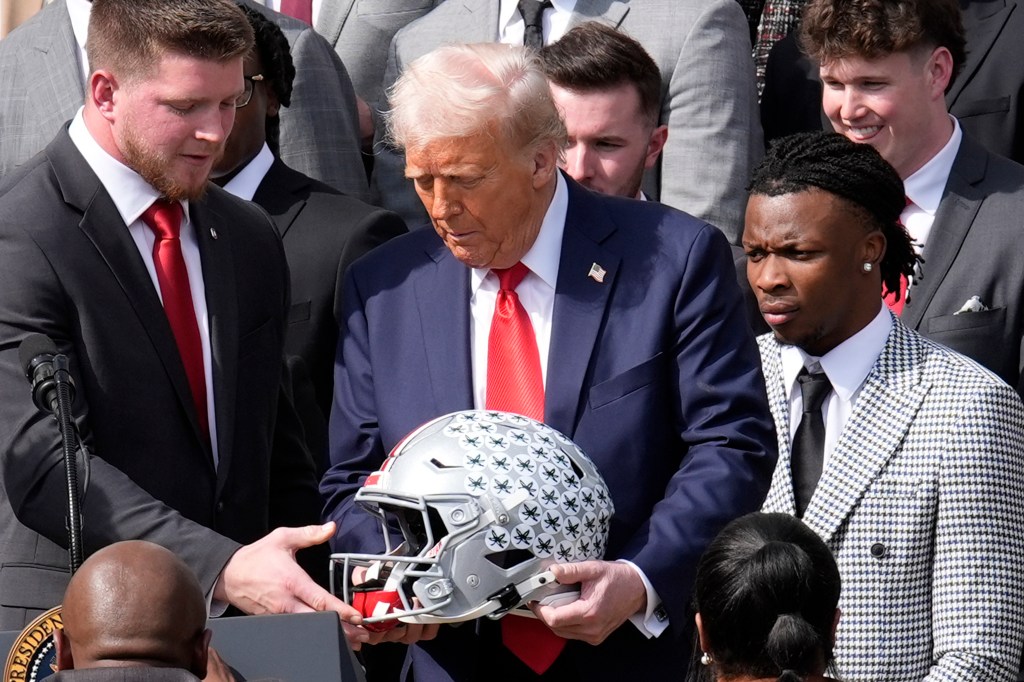
If you thought Donald Trump’s boldest promise was ending the war in Ukraine “on Day One” of his presidency, wait until you hear his latest miracle cure:
Our commander-in-chief actually thinks he can fix college football.
Cue the laugh track because that’s almost as funny as him promising to build a wall between the Big Ten and SEC.
Just in case you missed it, Trump signed an executive order last week aimed at “restoring sanity” and claiming that he is “saving college sports” in this era of eight-figure name, image and likeness (NIL) deals, the revolving-door transfer portal and a new nebulous revenue-sharing plan.
Trump’s order directs the Secretary of Labor and the National Labor Relations Board to determine whether college athletes should be considered employees. He also wants the Department of Justice and the Federal Trade Commission to help enforce the “amateur model” of college sports. He is also prohibiting booster-funded third-party, pay-for-play payments to collegiate athletes.
In related news, the president will soon appoint Johnny Manziel as the Secretary of Amateurism.
While I commend the POTUS for making an effort to clean up the sport, there’s a small problem:
It’s impossible for an executive order to fix college football.
Despite the bold language in the order, the actual power of Trump’s EO amounts to little more than a strong suggestion. An executive order, no matter how fiery the rhetoric or noble the intent, applies only to federal bodies. It can’t compel state schools, state politicians, private universities and athletic conferences. And, most importantly, executive orders can easily be overturned by the court system.
Bianchi: If UF, FSU and UCF are going to pay athletes with public funds, then show receipts!
And don’t kid yourself. Right now, the courts are the ones truly shaping the future of college athletics, not the NCAA, nor the White House.
The transformation of college football into a billion-dollar, booster-driven bazaar didn’t happen because the NCAA woke up one morning and decided to hand athletes the keys to the vault. It happened because the judicial system forced their hand.
In 2021, the Supreme Court delivered a unanimous 9-0 ruling in NCAA v. Alston, undercutting the organization’s ability to limit education-related benefits and paving the way for athletes to start getting paid. That same summer, after pom-pom waving politicians in several states began passing their own NIL laws, the NCAA effectively threw up its hands and said, “Fine, do what you want.”
The legal dominoes haven’t stopped falling. Now, athletes are not only cashing in on NIL deals, but thanks to the House settlement, schools themselves will be paying players directly – up to $20.5 million annually, per institution. That money shifts college sports even further away from purity and closer to payola. Like it or not, college football is already a professional sport, minus the accountability.
Trump’s executive order, then, enters this conversation not as a reform tool but as a political news release dressed in legalese. It’s a futile attempt to impose some modern-day “common sense” on a historically nonsensical system.
Trump’s desire to “stop the madness” of wealthy boosters bidding for top recruits sounds reasonable, but it reveals a fundamental misunderstanding of what NIL has become — and who’s really in charge.
The recently formed College Sports Commission (CSC), created to police third-party NIL deals and enforce the terms of the House settlement, already backed off from one of its first major mandates — a broad ban on booster-funded NIL collectives paying players directly. Less than three weeks after releasing that edict, they issued a new memo effectively punting on enforcement.
Their revised stance? Collectives can keep operating as long as they can show that each NIL deal serves a “valid business purpose” and is designed to turn a profit. But what qualifies as “valid”? How do you measure “effort to profit”? That’s anyone’s guess. For now, the CSC — a startup with just three employees and a backlog of high-dollar pay-for-play contracts — doesn’t have the manpower to police a system with more loopholes than a congressional ethics policy.
Bianchi: Gus Malzahn was so miserable at UCF, he would have retired if FSU hadn’t hired him
Even UCF athletic director Terry Mohajir, who told me a couple of months ago that he believed the CSC would do its best to regulate collective-driven NIL deals, must be having second thoughts. Within weeks of launching, the enforcement agency has already raised the white flag.
Trump’s executive order is essentially the president arriving at a demolition site with a dustpan and a whisk broom. Good luck, Mr. President, trying to get Congress to back your mandate. Multiple bills aimed at regulating NIL and college sports have already stalled out. Some states are even passing laws insulating their universities from being punished for breaking the pay-for-play rules.
In short, the executive order is essentially a political gesture. It creates the illusion of control, without actually exerting any. The president can’t make the courts rule differently. He can’t stop players from transferring. He can’t keep states like Texas or Georgia from enacting booster-friendly NIL laws. And he certainly can’t keep a five-star recruit from taking a seven-figure deal to switch schools.
Implementing an executive order to fix college football is like trying to stop a tornado with a “No Trespassing” sign. If the president truly wants to be college football’s commissioner–in–chief, he needs to start with one of those bunker-busting bombs he used to devastate Iran’s nuclear infrastructure. The only real solution is to nuke the whole thing and start over from scratch.
The NCAA is a weakened bureaucracy, desperately begging Congress for help. The Power Four conferences are essentially unregulated sports leagues with their own media empires. Athletes are empowered, litigious, and emboldened by recent court victories. Boosters are running payroll disguised as marketing agencies.
The fantasy that a single order from the Oval Office could sort all of this out is, quite frankly, hilarious.
With all due respect, Mr. Trump, college football doesn’t need a president.
It needs an exorcist.
Email me at mbianchi@orlandosentinel.com. Hit me up on X (formerly Twitter) @BianchiWrites and listen to my Open Mike radio show every weekday from 6 to 9:30 a.m. on FM 96.9, AM 740 and 969TheGame.com/listen
Originally Published:
-

 Sports3 weeks ago
Sports3 weeks agoAdapti, Inc. (OTC
-

 High School Sports2 weeks ago
High School Sports2 weeks ago100 days to men's college basketball
-

 Health2 weeks ago
Health2 weeks agoJoliet West alum's basketball clinic focuses on mental health as well as physical performance
-

 Health3 days ago
Health3 days agoThe Women Driving A New Era In U.S. Ski & Snowboard
-

 Health2 weeks ago
Health2 weeks agoFounder of group focused on men's mental health applauds Florida bill expanding access to …
-

 Youtube3 weeks ago
Youtube3 weeks agoStephen A. says ‘Haliburton is one of the most CLUTCH players of the postseason era’ 👀 | First Take
-

 Youtube3 weeks ago
Youtube3 weeks agoKD gave her another chance ❤️😂 (via superfanvivian/TT)
-
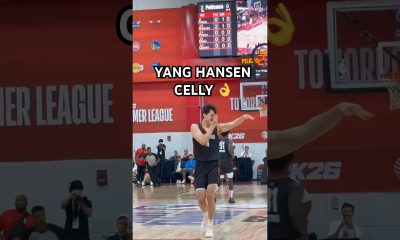
 Youtube3 weeks ago
Youtube3 weeks agoYang Hansen already has his own three point celebration 😂
-

 NIL5 days ago
NIL5 days agoESPN Announces 'dont wait run fast' by mgk as New College Football Anthem for 2025
-

 Sports3 weeks ago
Sports3 weeks agoWhere Is ‘The Summer I Turned Pretty’ House? All About the Filming Locations

































